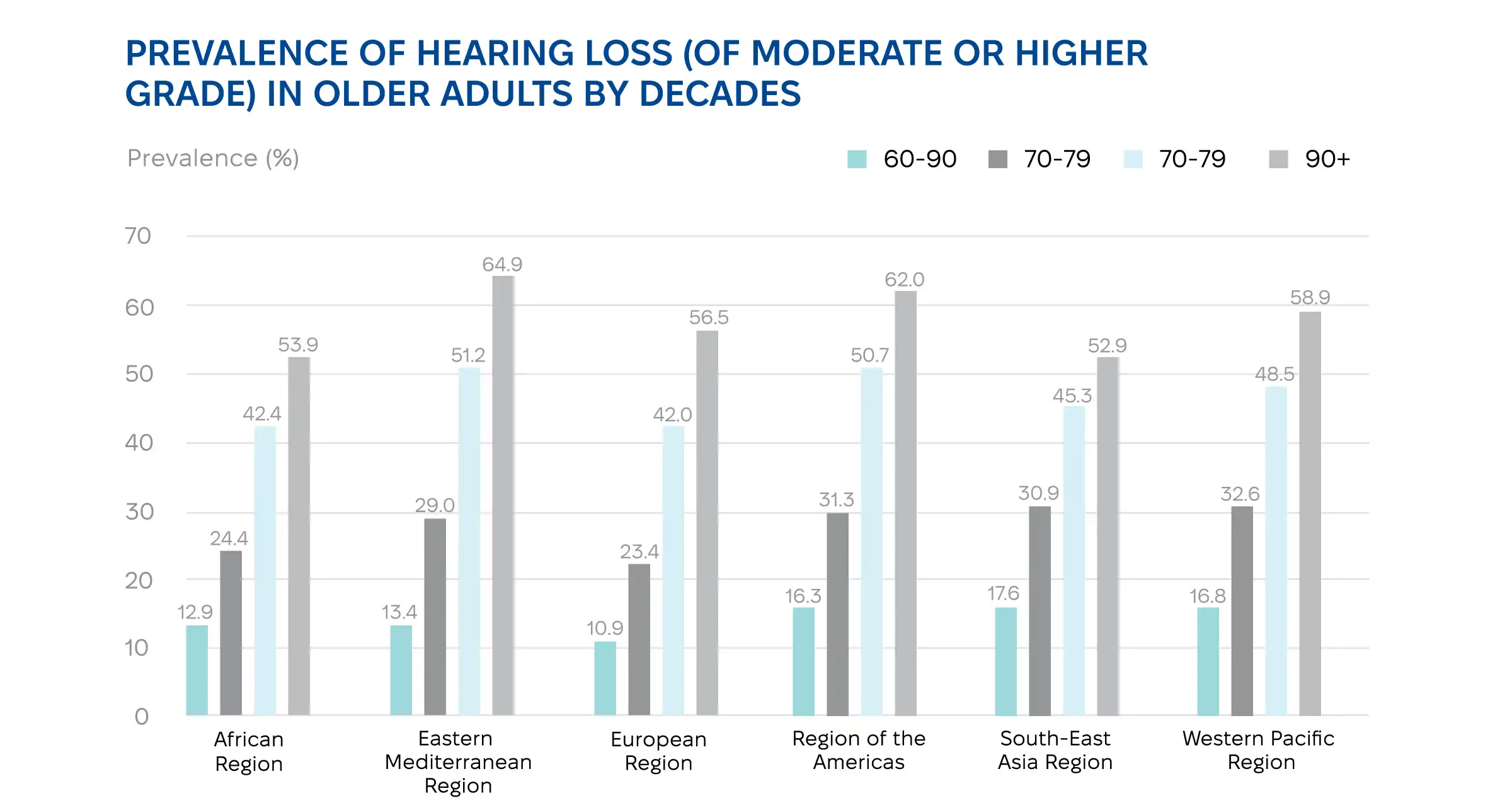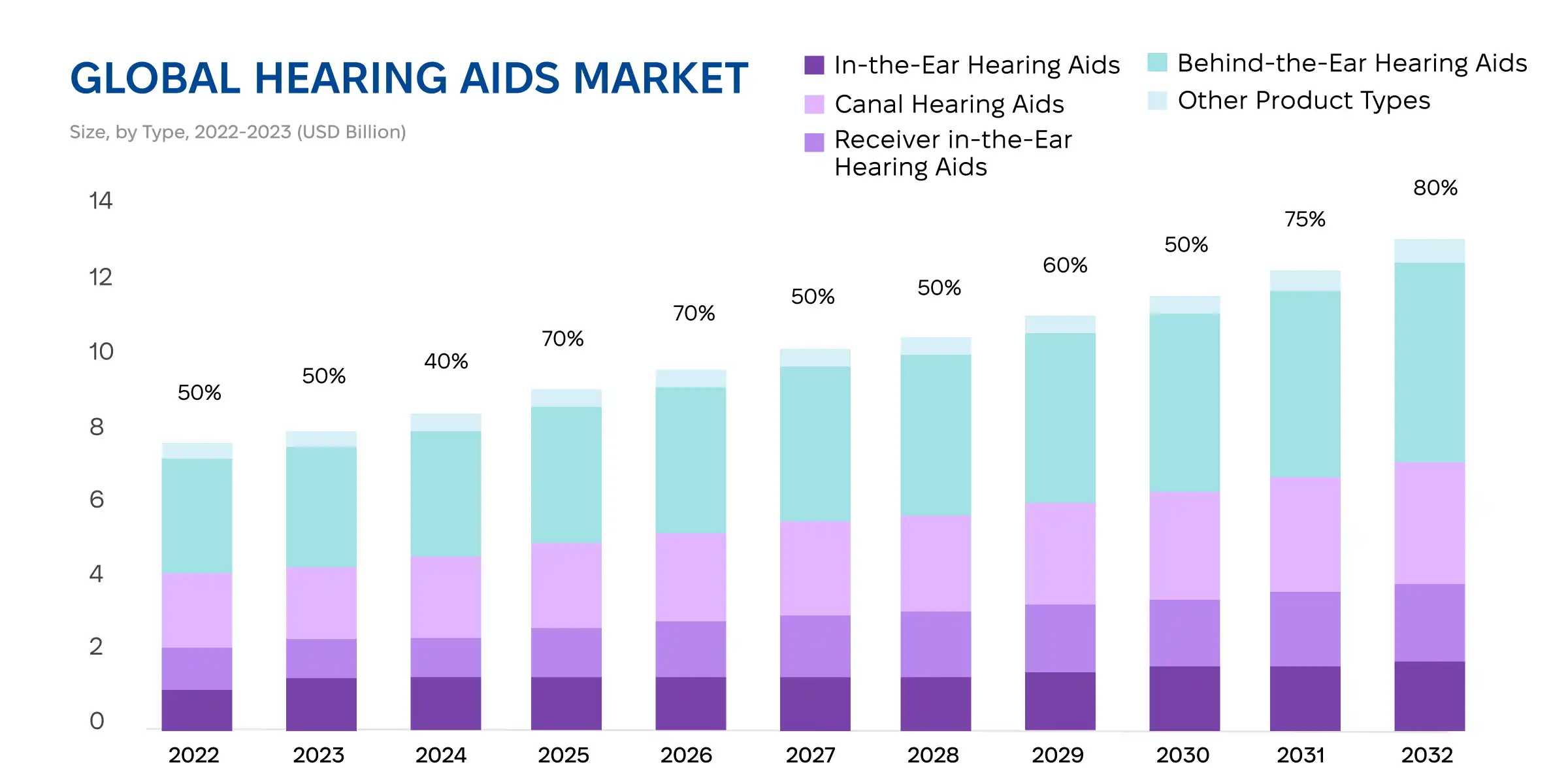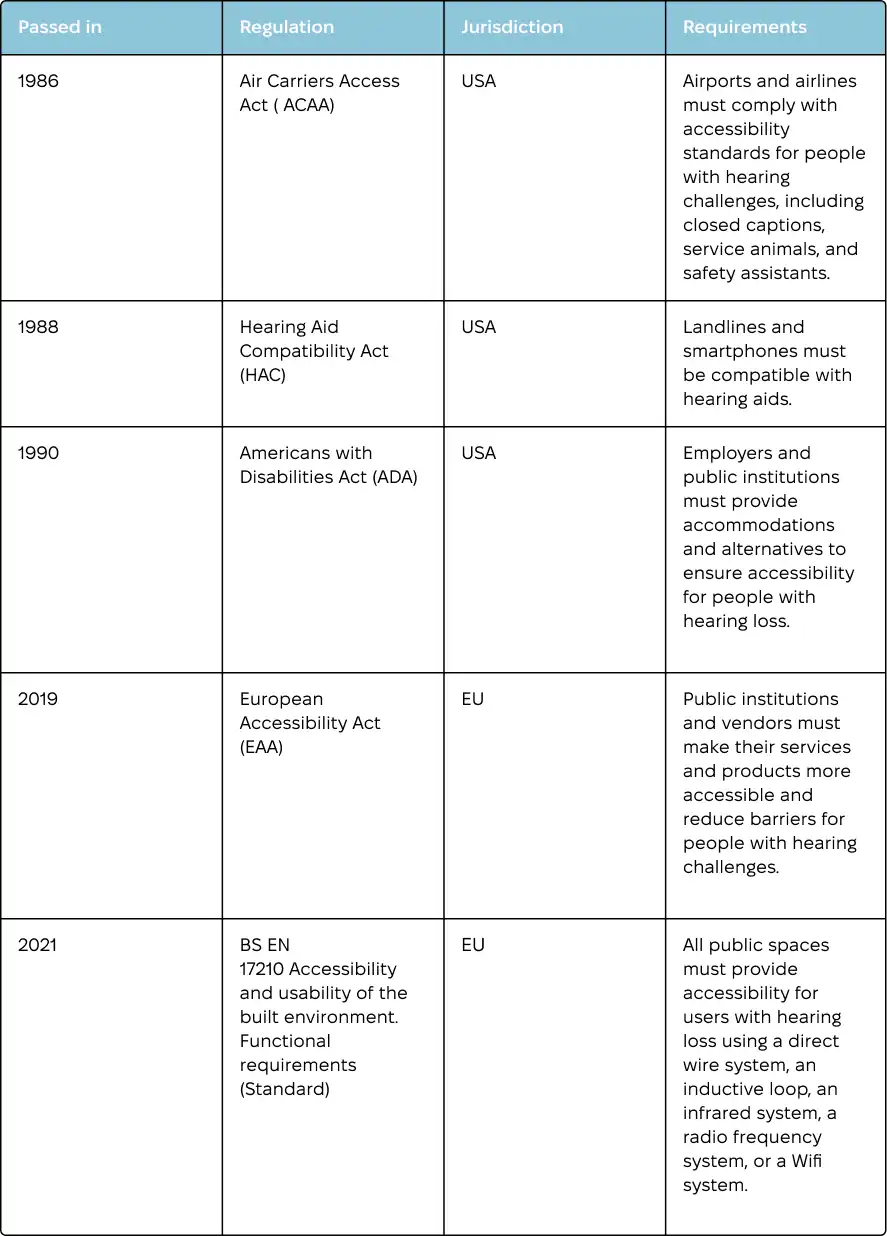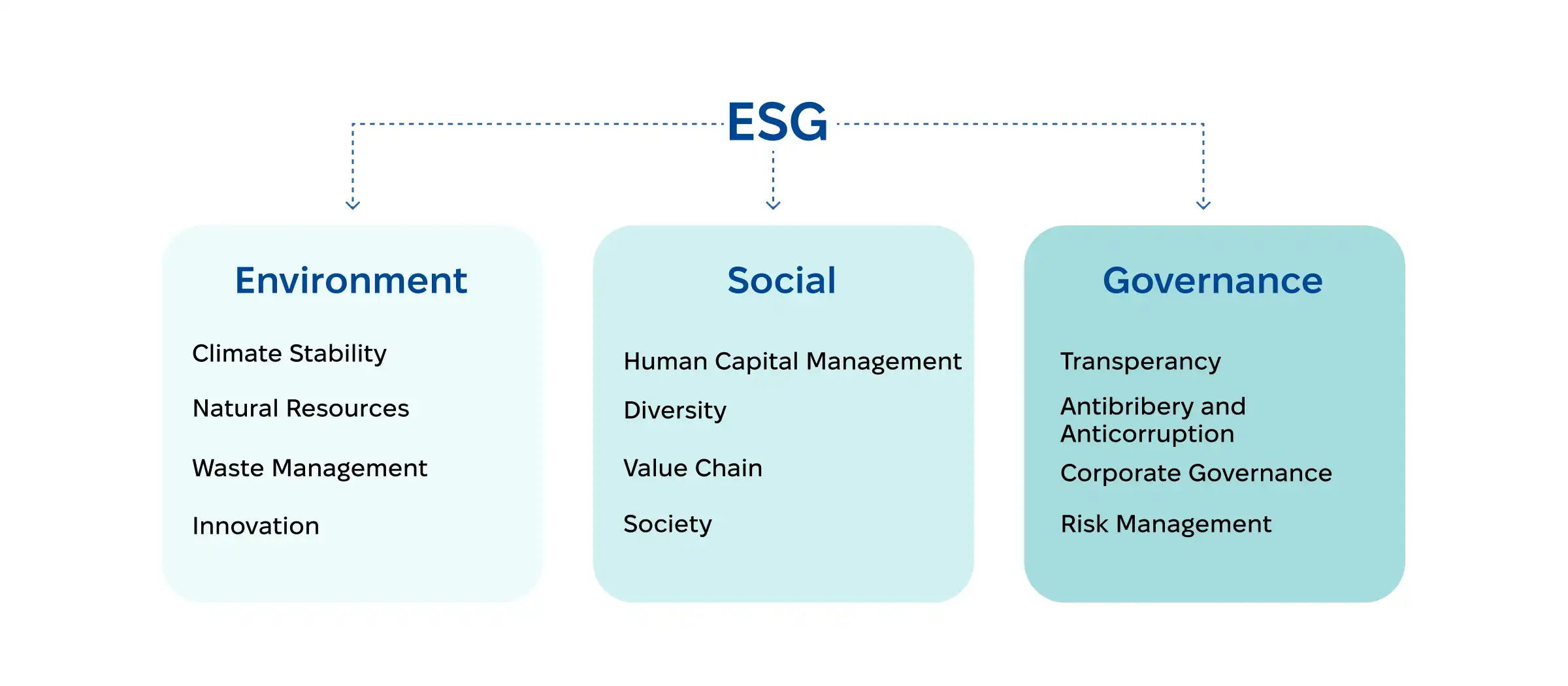Learn what drives demand for hearing aid technology. Explore ALS regulations and business benefits (like ESG) and discover the value of the right tech partner.
Imagine two-thirds of people in wheelchairs unable to go anywhere. A pretty unwelcoming world, right? But the same share of people with hearing impairments feel the same as they find hearing aids technology in public spaces lacking. They stay away from places that don’t address their needs, and those businesses are losing paying customers.
One in four people over 60 experiences hearing loss, and the population is rapidly aging. So, adopting ALS (assistive listening systems) is a smart long-term investment. At Exoft, we’ve seen firsthand the future of hearing aid technology and helped launch an
assistive listening webportal
for our clients.
Key takeaways:
- Over 90% of people with disabilities look for accessibility info, but 60% find ALS facilities lacking.
- ADA and EAA compliance is not the only reason to invest in ALS—it can be a competitive advantage.
- Implementing hearing aid technology boosts ESG performance and future-proofs organizations against evolving regulations.
Hearing Enhancement Technology: Market Overview
The developments in hearing aid technology are gaining momentum, spurred by the growing rehabilitation needs and aging population.
Key Global Stats
According to the WHO, over 5% or 430 million people globally need help addressing their hearing loss. Over 34 million are children. By 2050, 700+ million people will need hearing rehabilitation, and over 2.5 billion will have some audiology issues. So, implementing hearing aids technology advances today will prepare your business for the future.

Other companies have already noticed the trend. Experts expect the global hearing aids market size to grow at a
CAGR of 5.7%
between 2023 and 2032. The industry will expand from $7.7 billion to $13.2 billion within the next decade.
Why will the world need more hearing aids? An extended lifespan is a major factor, as
25% of people over 60
are affected by hearing loss. Increased noise levels and unsafe listening practices, especially among young people, are other common causes of hearing impairment.
Developed countries, including the US and the EU, are major consumers of hearing aid technology, but people in low- and middle-income countries need ALS just as much, if not more.
These
top medtech trends
prove that implementing hearing aid technology in the future will be even more in demand than it is now. And it’s not just individuals who drive up the adoption rates.

Who’s Driving Demand?
For a long time, people with hearing loss shouldered the responsibility. But these days, the hearing aids technology market is shifting towards B2B consumers, including:
- Healthcare facilities. Adopting ALS lets hospitals and clinics improve patient satisfaction rates while meeting regulatory requirements.
- Public transportation facilities. Airports, train and bus stations must comply with regulations, but ALS also helps them improve passenger experience.
- Other public spaces. Schools, universities, and other venues can combine regulatory compliance with their technology modernization efforts to benefit students and visitors.
For now, retail purchases dominate the market, but there’s a growing demand for ALS solutions for businesses, considering most venues overlook the needs of people with hearing loss or rely on outdated or low-tech options.
From Compliance to Competitive Advantage
Ignoring hearing aid technologies is no longer an option. Instead of endlessly playing catch-up, businesses can embrace the changes and turn the unwanted investment into a competitive advantage.
The Legacy Approach: Reactive Compliance
On paper, governments addressed accessibility issues for people with hearing loss over 30 years ago. But as technologies change and the number of people with disabilities increases, new regulations and standards have emerged:
| Passed in | Regulation | Jurisdiction | Requirements |
|---|---|---|---|
| 1986 | Air Carriers Access Act ( ACAA) | USA | Airports and airlines must comply with accessibility standards for people with hearing challenges, including closed captions, service animals, and safety assistants. |
| 1988 | Hearing Aid Compatibility Act (HAC) | USA | Landlines and smartphones must be compatible with hearing aids. |
| 1990 | Americans with Disabilities Act (ADA) | USA | Employers and public institutions must provide accommodations and alternatives to ensure accessibility for people with hearing loss. |
| 2019 | European Accessibility Act (EAA) | EU | Public institutions and vendors must make their services and products more accessible and reduce barriers for people with hearing challenges. |
| 2021 | BS EN 17210 Accessibility and usability of the built environment. Functional requirements (Standard) | EU | All public spaces must provide accessibility for users with hearing loss using a direct wire system, an inductive loop, an infrared system, a radio frequency system, or a Wifi system. |

For a long time, most people with hearing challenges remained unaware of their rights. So, businesses could implement solutions at their leisure. Most just ignored the laws. But this tactic doesn’t work anymore.
The Strategic Shift: Accessibility as Brand Equity
Accessibility is not just a fad. It’s a vital necessity for people with disabilities, as AccessAble survey results prove:
- 95% of respondents check accessibility before visiting a new venue, and 87% expect to find accessibility information on the website.
- 96% are more likely to visit venues when they have accessibility information in advance, and 95% feel anxious because of accessibility worries.
- 56% experienced disability discrimination while visiting venues.
- 44% believe accessibility has improved in the last five years, 9% think it has worsened, while 47% feel it has remained the same.

These results prove that forward-thinking businesses should prioritize accessibility. Making people who need hearing enhancements feel comfortable and welcome improves brand reputation, builds trust, and provides a competitive advantage.
Competitive Benefits
According to the
PwC 2024 Voice of the Consumer Survey,
customers are willing to pay a 9.7% ESG premium.
Deloitte
claims ESG practices resulted in better operational performance across 88% of companies and lowered the cost of capital for 90% of survey respondents. For 16.7% of businesses, ESG is the brand cornerstone, while 20.8% use it as an advantage to beat competition.
In contrast, venues that fail to meet basic ALS requirements lose businesses. According to the
Center for Hearing Access research,
62% of survey respondents said they seldom or never find assistive communication technology in public places. Most consumers prefer using captions or hearing loops in public spaces, if they are available, but 47% of survey participants who use wearable audio devices avoid public events, including movie theaters and churches, if they know ALS is absent.
So, while most businesses still weigh the pros and cons of adopting ALS solutions, you can lead the charge and gain ground on your competition. Strong ESG performance and related growth will appeal to investors and give your business a stronger position in public tenders and government contracts.
Learn how Exoft helps businesses leverage healthcare solutions for growth.
ALS as a Strategic Lever in ESG and Digital Transformation
Digital hearing aid technology contributes to accessibility, but is it worth the investment? Let’s break down the dimensions of ESG performance and cost-effective ALS implementation.
How ALS supports ESG goals
ESG is not just another woke acronym. It’s a critical factor shaping business landscapes, especially as Millennials and Gen Z drive changing consumer expectations. Luckily, implementing ALS addresses all three ESG pillars:
- E—Environmental. Hearing aids technology doesn’t directly impact sustainability, but it can have a huge ancillary effect. For example, access to public ALS devices can reduce personal device use, minimizing waste and individual carbon footprint.
- S—Social. Implementing the latest technology in hearing aids fosters inclusion and makes public services accessible to people with hearing loss or impairments. Health equity is especially critical for the aging population and will continue to influence decision-making for your clients.
- G—Governance. Transparency is another important factor for Gen X, Millennials, and Gen Z. When you’re clear about your commitment to fair access and ethical implementation of assistive technology, you breed customer loyalty and attract new clients from less transparent businesses.

Accessibility isn’t as buzzword-laden as “sustainability” or “carbon footprint”, but it's gaining ground in ESG reporting. It’s critical for some industries, like healthcare, construction, and infrastructure. Ensuring newly constructed public spaces meet accessibility requirements and going beyond the basics can give you the edge you’ve been looking for.
Cost-Effective Innovation
Building ALS into an existing infrastructure doesn’t have to be a considerable investment. Instead of a large-scale project, go with a modular implementation. Start with a small but scalable solution. You can expand it once you see the first returns, until you end up with a holistic ALS infrastructure.
But how does investing in new technology in hearing aids pay off? You save some, you gain some:
- Regulatory compliance means you’re safe from legal charges, fines, and settlements.
- Your brand isn’t connected with ADA scandals, so you safeguard your reputation.
- Improved user experience for people with hearing loss means more customers who feel comfortable in your space.
- You gain more clients through word of mouth, thanks to your ALS-driven benefits.
- Your infrastructure is future-proofed, so you’ll be ahead of the competition when new regulations emerge.
Ultimately, implementing ALS is an investment, not a resource drain, especially when it’s done right.

Future-Ready Organizations Choose Strategic Tech Partners
Implementing ALS is a strategic decision that will benefit your business for years to come. However, it is not without challenges, so it’s important to choose the best partner to help you along the way.
Current ALS Adoption Challenges
Money is not the only (or the main) barrier to hearing aids technology adoption. Many organizations struggle with:
- Fragmented legacy systems that don’t accept software and hardware updates easily.
- Ready-made solutions that don’t meet the complex needs of individual businesses.
- Low awareness of public space ALS solutions that’s caused by low availability.
- Additional employee training in using new hearing aid solutions for clients.
- Ongoing maintenance of ALS equipment to ensure stable operation.
- Developing solutions that would be convenient and easy to use for customers.
None of these are deal-breakers, especially if you choose the right tech partner to work on your ALS project.
New Growth Opportunities with Exoft
To follow the future of hearing aids trends, you need a reliable technical partner at your side. Exoft is the right choice for strategic ALS implementation. Here’s what we bring to the table:
- Deep technical know-how in healthcare. Our developers specialize in healthcare solutions development. One of our recent cases includes the development for a veteran rehabilitation center.
- Legacy integration capabilities. Exoft engineers can assess your current set up and implement hearing aid technology without disrupting your operations. We excel at modular scalable development for ALS and other solutions.
- On-budget solutions. Based on your requirements, we suggest a cost-effective healthcare app development process and launch the finished project on time without budget creep.
See our successful healthcare and ALS implementation solutions for evidence of these claims.
Long-term Value Creation
Timing is the key to business success. With Exoft’s help, you can future-proof your infrastructure and ensure it’s ready for evolving regulations and unpredictable changes. While your competition struggles to catch up, your business will be up and running, giving you an edge.
To maximize the effect, Exoft will help scale your ALS implementation across multiple locations and customize it to suit user needs better. Working with Exoft means your business will remain competitive for years.
Schedule a consultation with the Exoft team to discuss your ALS options.
Conclusion
Up to 10% of the global population will need hearing aids within the next 25 years. While accessibility is important to many customers now, hearing aid technology of the future will be a critical business success factor. So, investing in ALS today is a strategic investment for regulatory compliance, improved user experience, and brand loyalty.
To start your strategic shift toward accessibility, you’ll need a reliable technical partner. Exoft can contribute its engineering expertise and healthcare development experience. We have successfully implemented customer hearing aid solutions, and we’ll help you, too.
